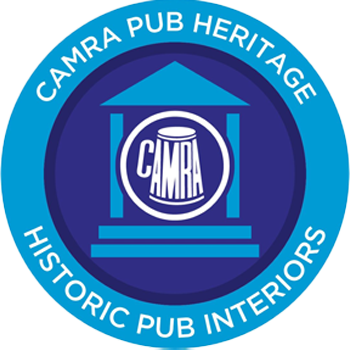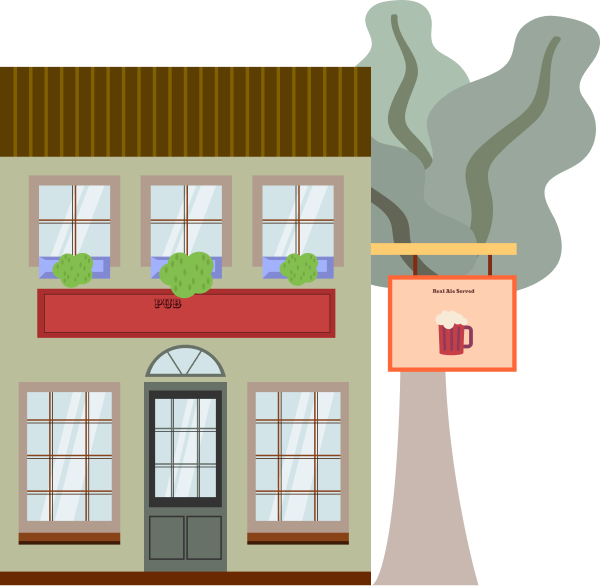This website is currently in beta. If you wish to go back to the current site please click here. To provide feedback or find out more about this site, please click here.



Let us know your thoughts by leaving a score
A hidden rural gem, this pub has probably changed very little over the last seventy or so years (apart from new loos!). Built in the 1860s, partly as a farm, and partly as a hotel to serve the nearby Mid-Somerset GWR branch railway station, it was part of the Duke of Somerset's estate. Sadly, in the 1960's, Mr Beeching closed the station, and the hotel became a quiet country pub. The farm was sold in the 1980s.
The one locally sourced beer and the cider is served from a glass panelled hatch in the central hallway. There may be a guest beer in the summer months.
There are two simple but comfortable rooms, one either side, for sitting and drinking. The one to the left has table skittles, and Bar Billiards in the right hand one. Outside, to the right, there is a good sized garden.
Included in the The Times “45 best summer pubs for summer” in July 2023
Historic Interest
Please see the website - https://pubheritage.camra.org.uk/pubs/142
Three star - A pub interior of outstanding national historic importance
Listed status: II
Owned by the Douel family since 1943, this pub is a wonderful survival. It was purpose-built, along with farm buildings around 1866 for the Duke of Somerset’s estate, and thus shows how rural pubs were often combined with farming and other functions (see Hunter’s Lodge above). The farm was sold in 1980. The pub has a plain but dignified exterior with a splendid wrought-iron inn sign on one corner and a surprisingly spacious interior of two rooms astride a large flagstoned corridor. The latter leads up to a glazed servery with horizontally sliding windows, within which is a bank of four (unused) brass taps and a number of built-in drawers, all no doubt dating from the building of the pub. The ground floor cellar is off to the left. The main public bar is front left and has simple bench seating and service by a hatch from the ‘cellar’. To the right is the ‘Commercial Room’. The only major change has been the addition of inside toilets in 1981. The adjective ‘timeless’ was invented for places like this. As much cider as beer is sold – something which would have been true in most rural Somerset pubs until quite recently. (A very similar pub, the Somerset Arms at Maiden Bradley, over the Wiltshire border, complete with farm buildings, was also built for the Seymour estate, but is now completely modernised.)
Purpose-built along with farm buildings in 1866 or 1867 for the Duke of Somerset's estate, it shows how rural pubs were combined with other functions (the farm was sold off in 1980). A dignified exterior with a splendid wrought-iron inn sign on one of the corners and a surprisingly spacious interior of two rooms and a central corridor. It has been in the same family ownership since 1943 and the only change has been the adding of inside toilets in 1981 on the rear left. The flagstone central corridor leads up to a glazed-in servery. It has three sections with the left and middle sections having the bottom sections open for serving. This is a popular area for customers to drink. Behind the screen are old cupboards, shelving and an old set of now-disused handpumps with porcelain handles set against the left wall. There is no proper till - notes are placed in various cupboards and coins go into small dishes.
On the left is the main public bar with a '2' on the door. and also a flagstone floor. It has simple bench and window seating attached to old dado panelling all painted turquoise, a 1930s brick painted red and wood-surround fireplace and service via a small hatch to the cellar complete with sliding glazed door. The cellar has a '5' on the door from the servery and has an old stillage at the rear which now contains polycasks of cider, originally it was for wooden casks of cider - cask beer is served using a handpump attached to shelving in the cellar. Rich's cider is sold at a remarkably low price and as a result the pub sells three times the amount of cider than real ale. To the right is the Commercial Room with shutters on the windows, a bar billiards table, table skittles, a couple of tables and metal framed, leatherette-padded chairs. Note the two old devices to ring service bells which were disabled in 2007 - if you look behind the servery you can see the old service bell box on the staircase.
You must be a Digital Subscriber or CAMRA Member to be able to view specially curated GBG descriptions

Seymour Arms, Witham Friary
With an unmistakable cover design, we are excited to announce that the foreword for this year’s Good Beer Guide has been penned by Bruce Dickinson, frontman and lead singer of Iron Maiden. © Campaign for Real Ale – Bruce Dickinson...